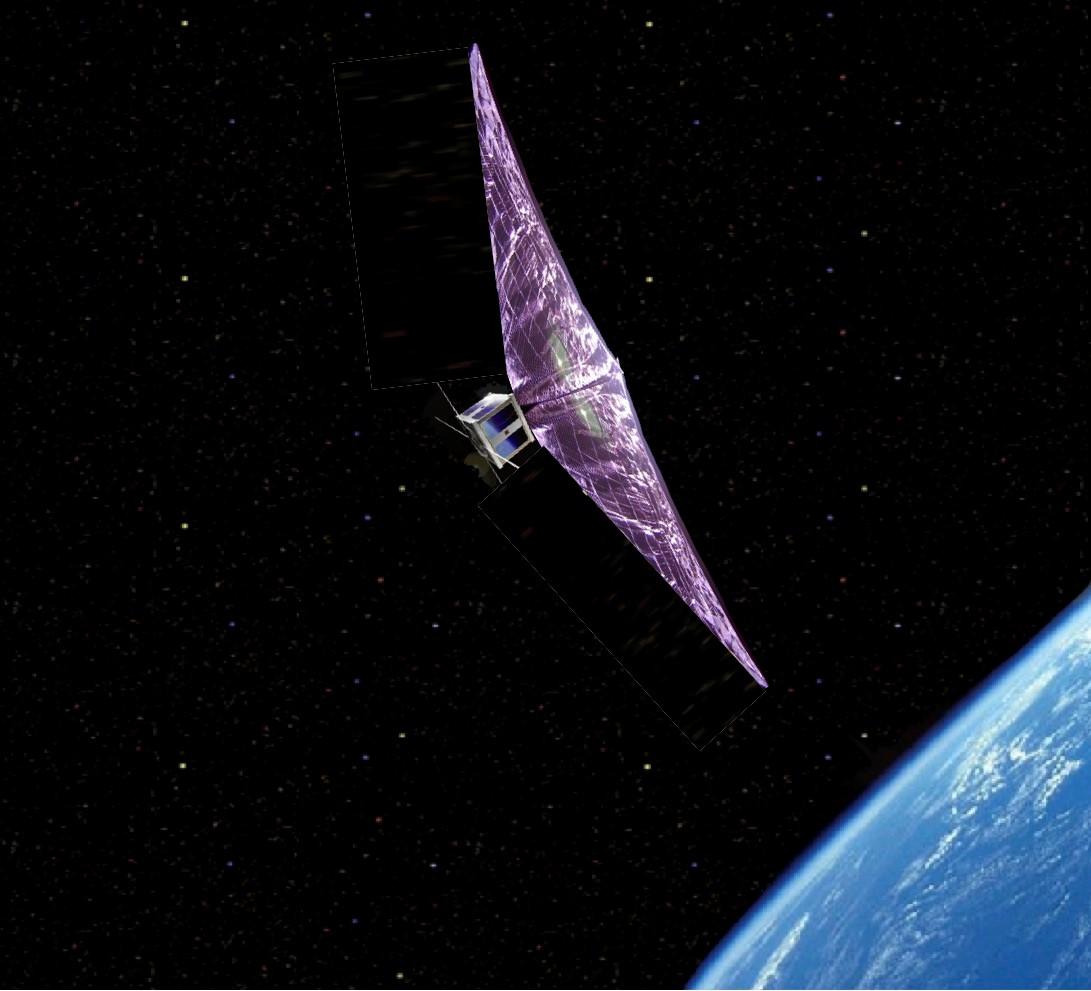ADE (Aerodynamic Deorbit Experiment)

Overview
The Aerodynamic Deorbit Experiment will provide flight qualification and characterize the performance of a deployable drag device to accelerate the deorbit of small satellites. Orbital debris is a growing problem in low Earth orbit. In certain high-value orbits the amount of debris has crossed a threshold of critical density where the number of debris objects will grow exponentially unless mitigated. Pico- and microsatellites represent problematic categories of orbital debris, as they can remain in orbit for over 25 years from orbits exceeding 650 km altitude. With plans for large constellations consisting of hundreds of small satellites, a passive aerodynamically-stable drag device provides an efficient method for accelerating deorbit following the completion of a satellite’s operational mission. The ADE 1U CubeSat will be deployed from the Centaur upper stage on a future United Launch Alliance launch. The baselined orbit for the ADE mission is geosynchronous transfer orbit (GTO), with perigee/apogee orbit altitudes of 185 km/35,756 km and an inclination of 27.0 deg. The expected orbital lifetime of ADE is 50-250 days following deployment of the drag device. With no drag device, a standard 1U CubeSat would remain in orbit for approximately 2,500 days (6.85 years). Dr. Spencer is the Principal Investigator for the Aerodynamic Deorbit Experiment.
Concept of Operations
- ADE will be launched as a secondary payload on an United Launch Alliance Atlas V, as a winner of their University CubeSat Launch Competition.
- After being dropped off in a Geosynchronous Transfer Orbit, the spacecraft will deploy the drag device.
- When the orbit approaches perigee, the atmospheric drag on the drag sail will passively stabilize the cubesat, as well as begin the deorbit process.
- An Inertial Measurement Unit (IMU) will record acceleration and attitude data through the lifetime of the spacecraft in order to confirm the passive stability, as well as record the actual deceleration produced by the drag device.
- Finally, the ionized air in front of the reentering CubeSat will prevent additional communications, and the spacecraft will burn up shortly after.
Payload Specs
- The entire drag device for this demonstration mission fits into the 1U (10x10x10cm) of the CubeSat along with all of the avionics, batteries, and radio.
- The drag device is made of transparent CP1 in order to minimize both the weight, and the effects of solar radiation pressure.
- Once deployed, the drag device will span just under 1m2, drastically decreasing the ballistic coefficient of the spacecraft.
- The drag device is expected to reduce the lifetime of the CubeSat by several orders of magnitude.
University Partnerships


Publications
- A. C. Long and D. A. Spencer, “Stability of a Deployable Drag Device for Small Satellite Deorbit,” in AIAA/AAS Astrodynamics Specialist Conference, AIAA SPACE Forum, (AIAA 2016-5676).
- A. C. Long And D. A. Spencer, “A Passively Stable Pyramid Sail for the Deorbit of Small Satellite Constellations,” In 68th International Astronautical Congress, 15th IAA Symposium on Space Debris (A6) Space Debris Removal Issues (5), 2017.
